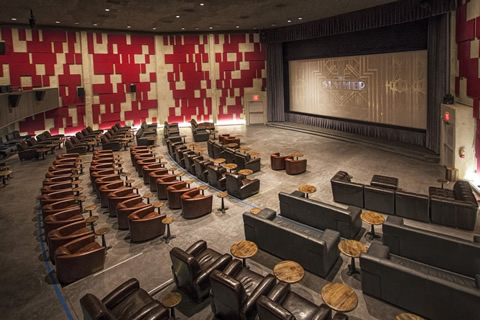NEWPORT’S HISTORIC MOVIE THEATERS ARE SOME OF THE LAST REMAINING SYMBOLS OF THE CITY’S PAST.
By Tess Eyrich
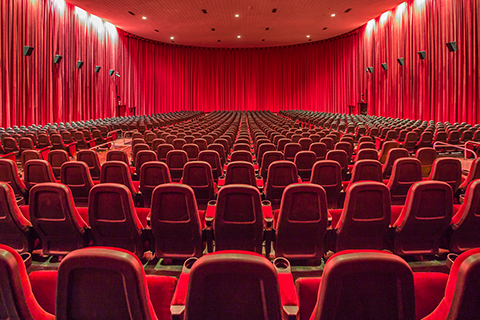
It’s a familiar truism that Southern California traditionally isn’t known for embracing its own history. In legendary places like Boston, Chicago and even San Francisco, cities’ entire personas are firmly rooted in the past. But us? We’ll move forward; thanks.
Orange County has few historical sites, spotty local mythology and no major monuments. Over the past year alone, Newport said goodbye to landmarks like Perry’s Pizza, Villa Nova and The Ritz Restaurant, and a large part of the community is still mourning the deconstruction of the original Balboa Fun Zone.
But there are some relics of Newport’s past that, miraculously, have managed to endure: its theaters. Some of these local movie houses remain relatively unchanged by time, and one has undergone a full-scale renovation. They’ve all been reborn as host sites for the Newport Beach Film Festival and other major events but—perhaps most importantly—they stand as powerful emblems of a past that’s all too often overlooked.
A Local Legend
The Edwards Big Newport 6’s main auditorium has been a Newport Beach institution since its debut in February 1969. Opened by then-resident James Edwards Sr., a theater magnate whose empire once extended across most of Southern California, the Big Newport remains a fixture of many locals’ childhood memories.
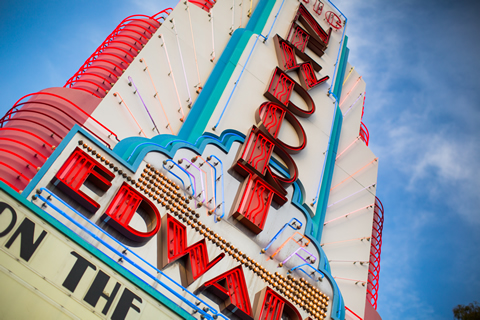
“The Big Newport has been my go-to theater since the mid-1970s,” says author and longtime resident Jeff Delaney, whose published works include love letters to the town like “Newport Beach: Then & Now” and “Newport Beach’s Balboa and Balboa Island.” “I have vivid memories of seeing ‘Star Wars’ there in 1977 and ‘Raiders of the Lost Ark’ four years later. My friends and I waited in line all day to see the first showings of each of the ‘Raiders’ sequels. There were raucous crowds who came armed with beach balls that they inflated after entering the theater. I vividly remember the theater manager directing ushers to retrieve the beach balls and deflate them.
“This same manager, whose name was Jim, became well known for his practice of standing before the crowd, announcing the film and its stars, then marching up the aisle while signaling the projectionist to roll the film,” he continues.
The first film screened at the theater—then just one auditorium with a whopping 1,249 seats—was Franco Zeffirelli’s 1968 adaptation of “Romeo and Juliet,” starring Olivia Hussey and Leonard Whiting.
“Attend the opening of the greatest cinema of all,” read a black-and-white poster advertising the event, and the hundreds who showed up weren’t disappointed by the wraparound driveway, expansive marquee and nearly 75-foot-wide screen that made the theater the place to be seen. “[It’s still] the premier venue to see a motion picture in this community,” says Shaun Mullen, a district manager for the theater’s parent company Regal Entertainment Group, based in Knoxville, Tenn.
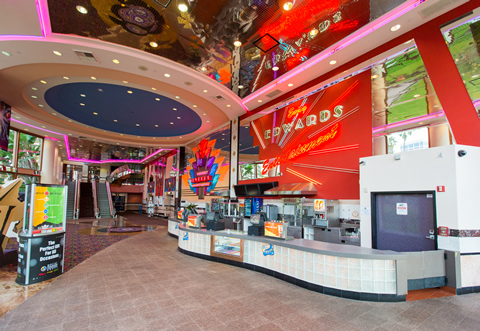
Following James Edwards Sr.’s death in 1997, the Edwards family filed for bankruptcy protection in 2000 and formally relinquished ownership of the chain in 2001. And Regal acquired the Big Newport in 2002—now a six-screen operation following additions made in 1974, 1989 and the early 1990s. As the largest theater circuit in the U.S. with 7,382 screens in 42 states, Regal has kept the Big Newport relatively preserved, only making minor changes to things like seating (there are now only 1,071 chairs in the main auditorium) and screen formatting.
Still, even a legend like the Big Newport is affected by contemporary development. Shaun says the theater was financially impacted by the Island Cinema at Fashion Island, also a Regal property, which underwent a massive renovation and reopened as a luxury theater in 2011. With only six screens, he adds, the Big Newport doesn’t rank among Regal’s top competitors—most of which are multiplexes.
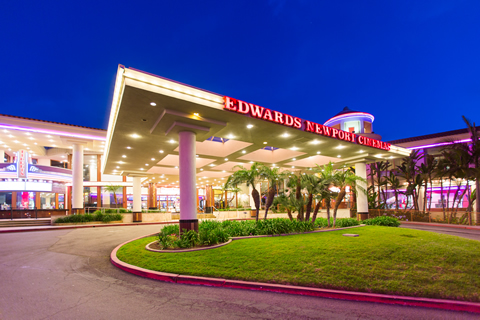
Yet, the theater will always hold a special place in the hearts of locals. “It’s a representative of the community,” Shaun says of the Big Newport. “You have a number of people who even today come to bring their kids and say, ‘This is where I came to see a movie when I was a kid.’ There’s a relationship with the theater that the local people have because that’s where they’ve gone their whole lives.”
A Piece of Living History
Just a few miles away from the Big Newport sits the city’s oldest movie house in operation, the Lido Theatre. Built in 1938 by the Griffith Co., the Lido Theatre is a dazzling remnant of art deco architecture, complete with vintage Catalina tiling and an interior balcony that seats 212.
Its design comes courtesy of the late Clifford A. Balch, a prolific Southern California-based architect who specialized in theaters. Some of his other still-standing projects include the El Rey Theatre and Los Feliz 3 Cinemas in LA, as well as the Golden Gate Theater in East Los Angeles, a towering Spanish baroque palace that now houses a CVS pharmacy.
A palace built in the heart of coastal Newport, the Lido is a theater with a storybook beginning. Silver screen queen Bette Davis lived in Corona del Mar while the theater was being built and often stopped by to check on its progress. At her insistence, a ground floor parlor was built for ladies to talk, fix their makeup and smoke, while the men were relegated to an upper-level restroom. In tribute to Bette—and also at her insistence—the theater opened with a screening of her 1938 drama “Jezebel.”
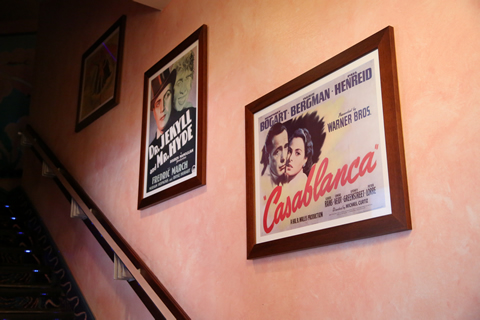
After decades of neglect, the theater was rescued by James Edwards Sr., who restored it and oversaw its operation from the 1970s through 2001, when, along with the Big Newport, the Edwards family lost the Lido following their decision to declare bankruptcy. It was acquired by Regency Theatres, a smaller chain of primarily art houses with a presence across California and Nevada.
“[The Lido] is a very special building and unique place to see a movie,” says Regency Theatres President Lyndon Golin. “Residents … bring their children and continue to support it.”
Those residents include people like Gordy Grundy, president of the Newport Beach Historical Society. “In many ways, I grew up at the Lido,” Gordy says. “As a group of young, immature boys, we would horse around, sow our wild oats and test our limits. We’d throw things off the balcony, make inappropriate noises and smoke cigarettes on the exterior stairwell. Of course, there was always the challenge of sneaking in. The Lido was a passion pit where I had my first kiss. That’s an age when seeing a movie was the secondary intention.
“The Lido [also] fueled my passion for cinema and entertainment hullabaloo,” he continues. “I used to drive the manager insane, always asking for film posters. He had to return them to the studio. I was adamant and persistent. He was tough, but I wore him down on the important ones. For a decade as a kid, the last thing I saw at night was ‘In new screen splendor … The most magnificent picture ever!’ I know every inch of that ‘Gone With the Wind’ poster.”
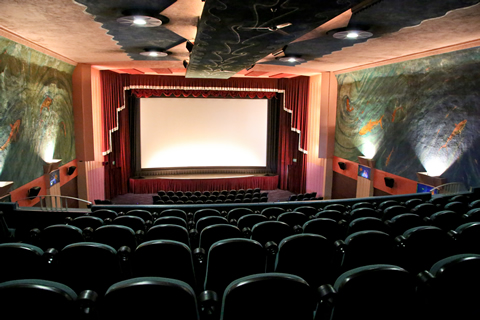
While the Lido remains a community treasure and Lyndon describes it as economically viable, he admits, “In general, single-screen theaters are … a tough business.”
Thanks to strategic moves, however, like converting to digital cinema and forming partnerships with the Orange County Film Society, the Lido has managed to stay afloat over the past decade, preserving a piece of local history.
A Rescued Landmark
The single-screen Port Theater in Corona del Mar is one of Newport’s most persistent survivors.
Ted and Peggy Jones of the Los Angeles-based Western Amusement Co. opened the original Port Theater in 1949. The theater, on Pacific Coast Highway among the flower streets, served as a central gathering place throughout the 1950s and 1960s. In its prime, a live elephant was brought on stage during the premiere of the circus film, “The Greatest Show on Earth,” in the 1950s.
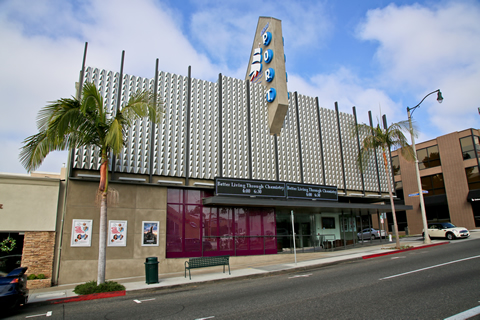
By the 1970s, however, the onslaught of multiplexes had begun to detract business from the Port and the theater shifted its programming, focusing mainly on screening foreign films from France, Italy and Japan. Then, in 1989, ownership transferred to Landmark Theatres and the Port was used as an art house. By 1998, amid plummeting attendance and safety concerns, the theater’s doors were closed indefinitely. City officials granted the Port’s owners a demolition permit in 2007, and the community prepared to suffer the loss of another landmark.
But like a fairy tale’s benevolent white knight, local investor Fariborz Maseeh stepped in at the theater’s final hour to rescue it from the wrecking ball. Fariborz, a scientist and philanthropist involved in several charitable initiatives, hired Craig Schultz of Laidlaw Schultz Architects to oversee the theater’s expansive revamp that focused on preserving its classic streamlined moderne design, a type of art deco architecture.
“The renovation itself was a massive undertaking,” says Jessica Prause, a representative for the Port Theater. “The theater had been closed for close to 10 years, and the building was dilapidated. A tremendous amount of effort went into replacing and refurbishing the entire building in a way that preserved its landmark status and historical facade, but made everything modern, new and state-of-the-art.”
A major part of the transformation involved rethinking the theater’s intended demographic. When it reopened in 2012, the Port joined the pack of luxury theaters—like Island Cinemas at Fashion Island—that have cropped up across Southern California over the past few years.
“We believe luxury theaters are the way of the future,” Jessica says. It’s hardly difficult to understand why—with gourmet fare and lounge-style seating, the days of buttery popcorn buckets and fountain sodas served in paper cups are fleeting.
The reality is that for a small movie house to stay financially competitive in today’s climate, making the jump to being a luxury theater is almost a necessity. Evening tickets at the Port start at a cool $18, and guests are given the option to purchase add-ons like food, beverages and VIP service. With less than 200 seats—including leather recliners on the main level, additional chairs on the balcony and a row of bar stools—the Port creates an intimate, exclusive setting for audiences to see a film.
Rebranding has allowed the Port not only to endure—a year and a half since its reopening, the Port is close to breaking even, Jessica says—but also to remain the only independently owned and operated theater in Newport. Attendance is steady and the word is continuing to spread; for the time being, the Port is protected. “We have community members who tell us they’ve been coming to Port since the 1950s,” she adds. “Neighbors … almost feel a sense of ownership over the theater.”
For a business to last in any community, it has to be able to adapt. These three theaters demonstrate just how crucial this ability is in a contemporary market. For now, at least, they remain decadent reminders of Newport’s history, preserved for the next generation of cinephiles to explore. NBM


